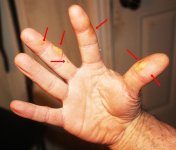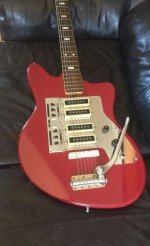I just picked up my first Heritage last week from Sweetwater - an H-150 in Vintage Wineburst. This "sweetwater exclusive" has SD Alnico Pro IIs instead of the usual SD '59s.
So far, I love it! Plays wonderfully, sounds great, is resonant as hell/sustain for weeks! I don't ever buy new guitars, but this was a special treat for myself!

There are a couple of issues I found though - nothing world ending to me, anyways. There was a ding under the pickguard where the bracket screw hit the top of the guitar (sucky but not a huge deal for me) and the neck pickup ring is cracked. Neither of which are a huge deal, but kind of bummers. You'd think they'd put some felt under the pickguard screw or something...Sweetwater offered to exchange for a different guitar, but the only other one in this color is heavier and uglier

They said they'd try to get me a replacement p/up ring.
The only other thing with fit & finish that has me going "wait, what?" is the wiring job:

That is some SLOPPY solder work - the only thing I can think of is that it originally had the SD 59's then there was a "oh s**t this one is supposed to have the Alnico IIs" and it was a Friday before a long weekend

(You can also see the stepped carve from the CNC; I don't know that I've seen a cavity like that before.)
Anyways, other than those teeny issues, I absolutely love this guitar and it absolutely blows away several other LPs I've played lately.






